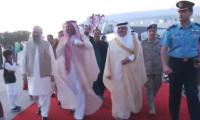ISLAMABAD: Amid lingering concerns expressed by the Supreme Court of Pakistan over increasing losses faced by the state-owned giants like PIA and others, there is another bad news that 200 state owned entities have turned from net profits into net losses in totality, posing threats to the national exchequer in months and years ahead.
Earlier, the SOEs used to earn net profits in totality but for the first time in the country’s history, the net profit had turned into net losses, which should have been major concerns for all economic managers of the country.
The Ministry of Finance has prepared a report on performance review of State Owned Entities (SOEs) on the basis of financial accounts for fiscal year 2015-16 but, so far, it was not officially released.
Some contents of the performance review of SOEs seen by this correspondent confirmed that overall SOEs profits on annual basis had turned into losses in the fiscal year 2015-16, so the Ministry of Finance did not yet grant permission to release this annual report.
When one top official of the Finance Ministry was contacted for comments last week, he said that they were busy in finalising the next budget 2018-19, so this report would be released after finalisation and approval of the budget.
When asked to throw light on the reasons behind the net losses faced by SOEs, he said the power sector was not allowed to pass on the increase in tariff, so it faced loses. These accumulated losses had turned the net profits of SOEs in totality into net losses and there has been nothing to worry about it, he added.
The Ministry of Finance has established the economic reform unit (ERU) to overhaul the SOEs in consultations with the line ministries. The ERU of the Finance Ministry has started preparing performance report of SOEs as annual feature to sensitise the political leadership and policymakers for undertaking required reforms to avoid cash bleeding of state-owned entities.
The state-owned participation in the market has evolved over the years, with only 12 companies at the time of independence to 257 companies in the late 1980s. However, in the past two decades, divestment and deregulation has promoted private sector participation through a reduction in state-owned entities at the federal government level, which now stands at 183.
The SOEs in Pakistan are engaged in the provision of essential infrastructure and related services such as electricity distribution and generation companies, gas and pipeline infrastructure, transport, promotional and advocacy organisations and commercial and non-commercial financial institutions.
In addition to being significant providers of infrastructure, the SOE sector is also an important sector as it employs over 402,543 people. Structuring and management of the SOEs to ensure that all enterprises can access world class infrastructure and services at competitive prices, and provide a basis for making informed decisions as to further investments or potential divestments of the state assets.
There are 183 SOEs categorised under three broader categories, including public sector companies (PSCs), non-banking finance companies and development finance institutions (NBFCs & DFIs) and key Federal Authorities.
In the last year review report for 2014-15, the overall profitability of SOEs remained under pressure, especially in the energy sector, owing to fall in international oil prices. This resulted in sharp decline in oil marketing companies (OMC) margins, power sector tariff and distribution margins of both hydrocarbon and power sector entities.
Drastic fall in international oil prices affected the performance of state-owned entities in the energy sector. The same is evident by the fact that average basket price of crude oil during the period, July 2014-June 2015 plunged to $74.45/barrel from $106.64/barrel in the corresponding period last year. Resultantly in case of few large energy sector entities like OGDCL, the company’s average realised prices recorded for crude oil and gas were $63.29/barrel and Rs272.61/Mcf compared with $87.71/barrel and Rs282.95/Mcf respectively in the last year. In addition, change in the average exchange rate to Rs/$102.14 from Rs/$103.40 impacted the profitability.
Apart from drop in oil and gas prices and exchange rate, increased exploration and prospecting expenditure on account of enhanced geophysical survey combined with higher operating expenses mainly owing to increase in depreciation on property, plant and equipment, impairment on development and production assets and joint venture expenses coupled with increase in repairs and maintenance pertaining to equipment, annual turn around of major plants and software maintenance contributed to the reduced profitability.
The overall profitability of the power sector also suffered due to reduction in turnover of power distribution companies and the National Transmission & Dispatch Company Limited by 10% & 17% respectively.
Drastic reduction in turnover resulted in sharp decline in overall power sector profitability, and the profit of Rs31 billion converted into a loss of Rs18.5 billion. The performance of financial sector largely remained stable (return on assets increasing from 1.7% to 2.1%) mainly due to better asset liability management at the financial institutions. The GoP received Rs65.85 bn (Rs59.1 bn in FY 2013-14) from SOEs as dividend which is 0.60% of the total asset base of Rs10,823 bn. Out of 169 public sector companies (PSCs), 12 are listed on either of the three stock exchanges of Pakistan.
Subsequent to issuance of Public Sector (Corporate Governance) Rules, 2013, for PSCs, the composition of the Board of Directors has improved and out of total 970 board members there is 4% representation of females in commercial PSCs and 7% in non-commercial PSCs.







